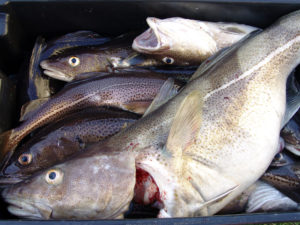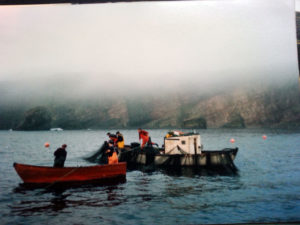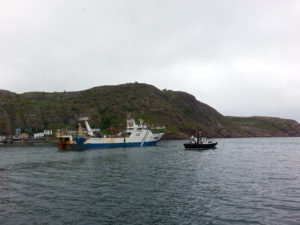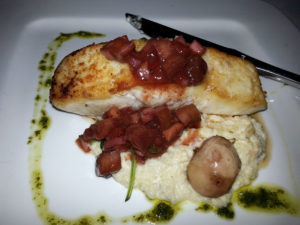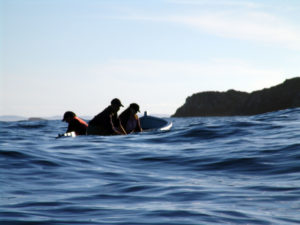A post by Jim McCarthy:
When I read the story Andrew wrote about Ferryland a few weeks ago I thought it might be wise to further explain how Sarah Kirke and other 17th century plantations amassed such riches in Newfoundland. Sometimes I marvel at our lack of understanding and the limited respect we bestow on Newfoundland’s “lowly” codfish given its tremendous importance to the world; the wealth it created, the countries it fed and the culture of people it bred on this remote island in the middle of the North Atlantic Ocean. But then there probably aren’t many who think of an era that predates refrigeration.
When Christopher Columbus first landed on these shores in the latter part of the fifteenth century, an eastern passage to India had long been utilized but it was a dangerous trip that was covetously protected by warring nations for generations. With the new understanding and acceptance of a “global planet” – it only made sense that a western route would also exist.
While early explorers may not have discovered a new passage to India, what they found would soon be recognized as something far more significant. Though they didn’t make their way to the coveted land of “spice”, they instead discovered something of far greater value – the richest and most valuable protein reserve in the world; Newfoundland’s Cod fishery.
The beauty of codfish is that its attributes are so multifaceted. It was abundant beyond imagination, simple to catch and very easy to handle. Cod required little secondary processing and needed no additives other than a little salt and lots of fresh air to preserve it. It stored flat, travelled well, and therefore could be used to feed entire cities – or more importantly, armies!
Additionally, nobody would ever grow tired of its taste because salted codfish can be nearly perfectly restored to its original texture and flavor with nothing more than an overnight soak in fresh water. No longer would your tastes be imposed upon by another culture’s method of preservation. This was as close to fresh as could be expected before the age of refrigeration. Imagine the magnificent Mediterranean dishes prepared with cod stock, the beautiful Portuguese dinners, France, Dutch, even England’s ‘Fish n Chips’ – Everyone enjoyed and greatly desired codfish.
Refrigeration’s rudimentary start up should have killed the cod fishery. Not only did it allow us to transport a variety of meats to compete in traditional fish markets, the temperature fluctuations of early refrigeration systems were far more likely to cause the flesh of a fish to spoil long before its new competitors reached their markets.
But cod’s sheer abundance and improved harvesting technologies created a new value system for cod; one that was founded on sheer volume and mass. This beautiful table fish was now reduced to a mince that could be packaged as fish sticks, fillers, and cheap protein.
Unfortunately, these fishing methods proved to be terribly invasive, destroying the stock and decimating Newfoundland’s entire ocean ecosystem. The world’s rainforests were never subjected to such absolute devastation. Thousands of “draggers” repeatedly hauled their heavy steel nets over the ocean’s bottom with the equal abandon of several dozen bulldozers – squatting every living creature to a puree while cutting a swath of destruction in their wake.
A cod moratorium was finally imposed on these shores in 1992 and once the draggers were removed and now that enough time has passed, the cod has re-established itself and stocks have returned to sustainable levels. Many would think this would be a time of celebration yet our fisheries representatives and government officials lament the return of our cod as somewhat of a “nuisance” whose markets have long been lost to foreign producers.
In response to which, I can’t help but think, “Good”. We’re no longer interested in using Newfoundland’s premium fish resource to feed prisoners. Cod is still the world’s finest table fish and it should be harvested, processed and marketed accordingly.
Cod is the most versatile fish on the planet. Halibut is lovely but you can’t eat it more than once every other week. Salmon’s distinct taste dominates your palate regardless of the recipe chosen. Turbot and so many others fall into the category of “slubby and watery”. But cod’s texture, it’s perfect fat content and delicate flavour means it can be served and enjoyed every night of the week, in any multitude of ways.
It can be deep fried, pan fried or quick froze. You can broil it, bake it or even poach it. It’s the perfect stock for soup and I recently saw it paired with lamb in an exquisite ‘Mallard’s Cottage’ stew. It’s used as a stuffing, pressed as a cake, and layered in salad greens. It can be topped with drawn butter, berries, tartar sauce, honey, lemon, a variety of fruit juices, and even gravy. It’s the most versatile ingredient on the planet and should again be recognized as the most premium fish product in the world.
Cod is indeed a gift from God – and we owe it every homage and effort to protect and preserve our stocks for the entire world to enjoy.
Let’s go jigging!


